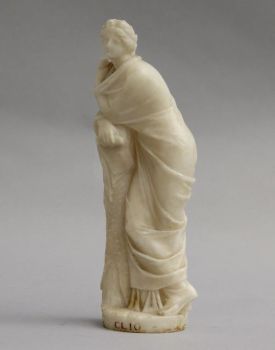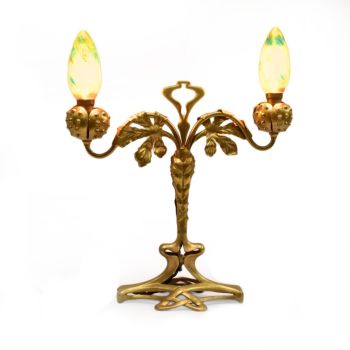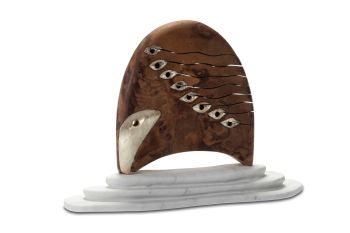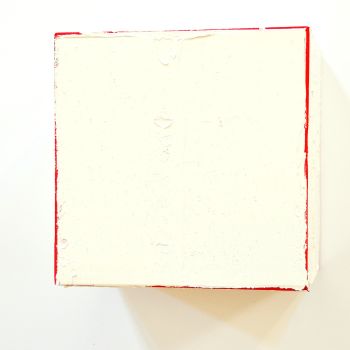Marquitery cabinet in the style of Louis XIV 20th century
Unbekannter Künstler
NussbaumHolz
190 ⨯ 166 ⨯ 44 cm
ConditionVery good
€ 4.199
Olischlager Antiquairs
- Über KunstwerkLouis XIV cabinets, also known as “cabinets of curiosities,” were sumptuous rooms dedicated to the display of rare and precious objects. This highly refined 20th-century cabinet, made in the style of Jan van Mekeren, is an excellent example of the Louis XIV style. These Louis XIV-style cabinets are used as centerpieces in both classic and modern interiors. This example is in perfect condition. The marquetry on the cabinet was done by a highly skilled craftsman. Marquetry is a decorative technique that involves creating patterns by inlaying pieces of wood, metal, ivory, or other materials into a surface, usually wood. This technique, which dates back to antiquity, reached its peak in Europe in the 17th and 18th centuries, particularly in France during the reign of Louis XIV.
- Über Künstler
Es kann vorkommen, dass ein Künstler oder Hersteller unbekannt ist.
Bei einigen Werken ist nicht zu bestimmen, von wem sie hergestellt wurden, oder sie wurden von (einer Gruppe von) Handwerkern hergestellt. Beispiele sind Statuen aus der Antike, Möbel, Spiegel oder Signaturen, die nicht klar oder lesbar sind, aber auch einige Werke sind überhaupt nicht signiert.
Außerdem finden Sie folgende Beschreibung:
•"Zugeschrieben …." Ihrer Meinung nach wohl zumindest teilweise ein Werk des Künstlers
•„Atelier von ….“ oder „Werkstatt von“ Ihrer Meinung nach eine Arbeit, die im Atelier oder in der Werkstatt des Künstlers, möglicherweise unter seiner Aufsicht, ausgeführt wurde
•„Kreis von ….“ Ihrer Meinung nach ein Werk aus der Zeit des Künstlers, das seinen Einfluss zeigt, eng mit dem Künstler verbunden, aber nicht unbedingt sein Schüler
•"Art von …." oder „Anhänger von ….“ Ihrer Meinung nach eine Arbeit, die im Stil des Künstlers ausgeführt wurde, aber nicht unbedingt von einem Schüler; kann zeitgenössisch oder fast zeitgenössisch sein
•„Art von ….“ Ihrer Meinung nach ein Werk im Stil des Künstlers, aber späteren Datums
•"Nach …." Ihrer Meinung nach eine Kopie (jegliches Datums) eines Werks des Künstlers
• „Unterzeichnet …“, „Datiert …“. oder „Beschriftet“ Ihrer Meinung nach wurde das Werk vom Künstler signiert/datiert/beschriftet. Das Hinzufügen eines Fragezeichens weist auf einen Zweifel hin
• „Mit Unterschrift …“, „Mit Datum …“, „Mit Aufschrift ….“ oder „Trägt Unterschrift/Datum/Beschriftung“ ihrer Meinung nach die Unterschrift/Datum/Beschriftung von jemand anderem als dem Künstler hinzugefügt wurde
Sind Sie daran interessiert, dieses Kunstwerk zu kaufen?
Artwork details
Related artworks
Unbekannter Künstler
Two Centaurs, France or Italylate 18th
Preis auf AnfrageRobert Schreuder Antiquair
1 - 4 / 12- 1 - 4 / 24
 Kuratiert von
Kuratiert vonDanny Bree
1 - 4 / 24- 1 - 4 / 4




































































